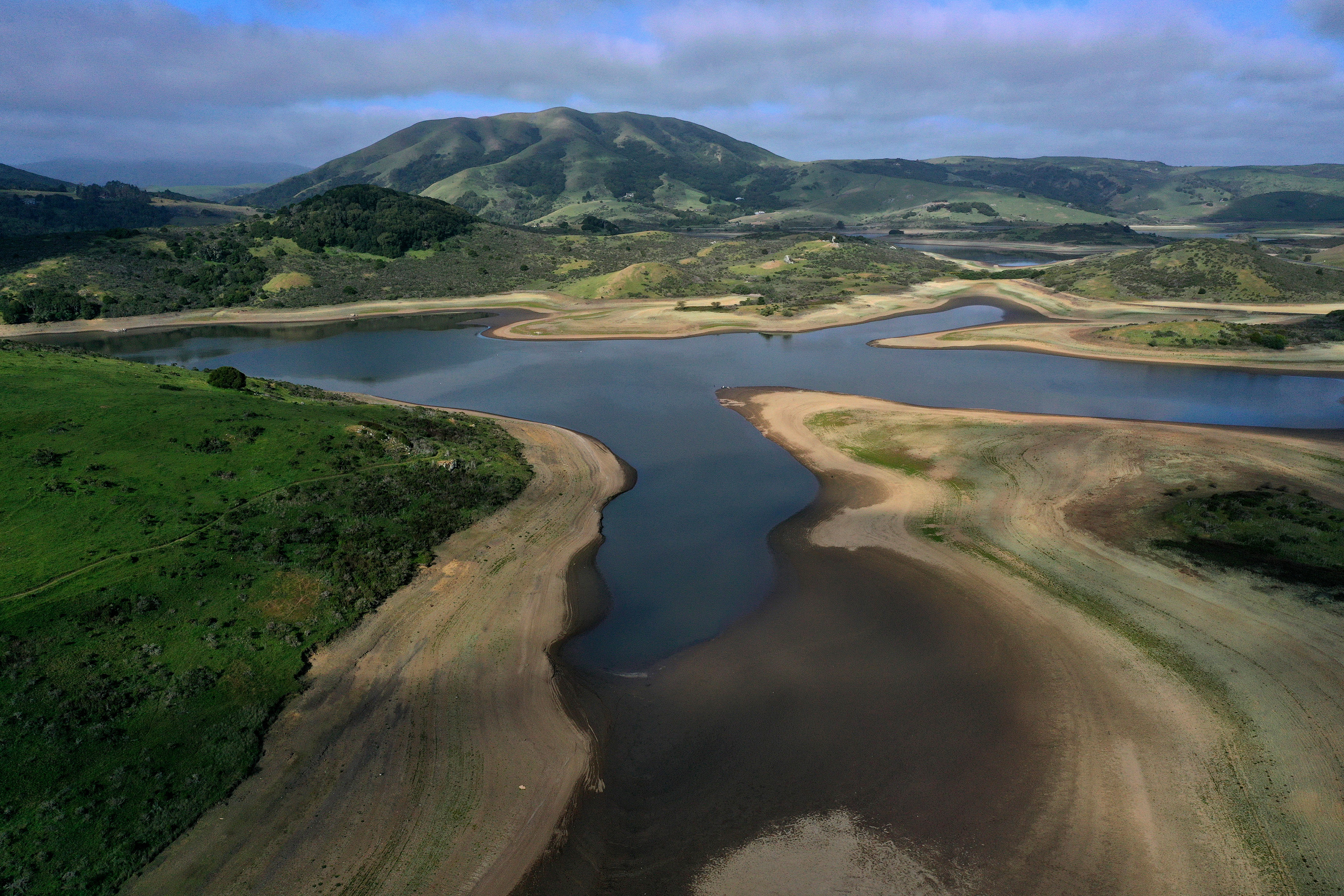Water levels are running dangerously low in rivers, reservoirs, and aquifers across much of the American West, raising serious dangers of shortages, fallowed agricultural fields, and extreme wildfires in the coming months.
Monitoring stations across California’s Sierra Nevada range are registering some of the driest conditions on record for this point in the year. High spring temperatures already mostly melted away this winter’s light snowpack, which usually supplies about a third of the state’s water.
In New Mexico, where half the state faces “exceptional drought” conditions, water districts are delaying allotments to farmers and urging them to simply not plant crops if possible.
This story is only available to subscribers.
Don’t settle for half the story.
Get paywall-free access to technology news for the here and now.
Subscribe now
Already a subscriber?
Sign in
All told, nearly 85% of the West is suffering through drought conditions right now, according to US Drought Monitor. Almost half the region is now in an extreme or exceptional drought, following years of dry, hot conditions aggravated by climate change.
The proximate cause of this year’s drought is a weak summer monsoon coupled with La Niña conditions that steered storms north. But the problem goes well beyond less rain and snow falling in recent months. The Southwest has suffered through the driest period since the 1500s for two decades now, according to a study in Science last year.
Climate change accounts for 46% of the severity, pushing what would have been a moderate drought into what the scientists deem “megadrought” territory. Numerous other studies find that higher temperatures will mean “more frequent and severe droughts in the Southwest,” noted the 2018 National Climate Assessment.
“Snow melts faster. There’s more evaporation. It just changes the game in so many different ways,” says Newsha Ajami, director of urban water policy at Stanford’s Water in the West initiative.
Alarm bells
Regions are already scrambling to address the rising dangers.
In California, Governor Gavin Newsom has proposed spending more than $5 billion to meet emergency water needs and shore up regional water infrastructure, among other efforts. He also declared drought emergencies across 41 counties, covering nearly all of Northern California and the Central Valley, the state’s rich agricultural region.
In Marin, a county north of San Francisco that’s largely isolated from regional water systems, reservoirs are running ominously low following nearly record low rainfall this year. To ensure the water supply, the water district is discussing the possibility of building at least a temporary pipeline across the Richmond–San Rafael Bridge for the first time since the state’s crippling 1976–1977 drought.
Researchers, officials, and emergency responders are also bracing for another terrible fire season, which is off to an early start. The Palisades fire near Los Angeles has burned across more than 1,000 acres of dry brush in recent days, forcing more than 1,000 people to flee their homes.
“Some elements of fire season risk are predictable; some aren’t,” says Daniel Swain, a climate scientist at the University of California, Los Angeles, who focuses on the atmospheric conditions that drive droughts, floods, and wildfires. “All the predictable ones are ringing alarm bells.”
The new normal
Some climate modeling finds that warming increases the variability of rainfall patterns, creating what researchers studying California’s conditions have described as a “whiplash” between more extreme periods of drought and flooding.
But years-long periods of extremes don’t naturally balance each other out, even if average precipitation levels stay the same. If regions don’t fundamentally rethink how they’re managing water, it will too often mean simply going from one type of disaster to another (see the 2012–2016 drought in California, immediately followed by flood years that triggered mudslides, washed out roads, and pushed one dam near the breaking point).
“We have to shift our mindset to ‘drought is a normal thing,’” Ajami says. “And then when we have wet years, we should get excited and do a billion things to capture as much water as we can, to ensure we store enough for when we run dry again.”
That will require making better use of groundwater by cleaning up contaminated aquifers and refilling them during heavy rainfall years. Regions will also need to make far more efficient use of water once it’s in the system, reducing, reusing and recycling wherever they can.
We will also need to rely more upon—and drive down the cost of—desalination technologies. Those include not just the giant seawater plants that pull drinking water from the ocean, but also smaller, inland facilities that desalinate brackish groundwater, treat municipal wastewater, and enable onsite industrial water reuse, says Meagan Mauter, a professor of civil and environmental engineering at Stanford and research director of the National Alliance for Water Innovation.
As things get worse, some areas will likely need to grapple with even harder questions about where farms, businesses, and cities should go, grow, or remain.
But for now, tens of millions of people who live across the West are just hoping to prepare for what promises to be a very hot, dry, and dangerous summer.
